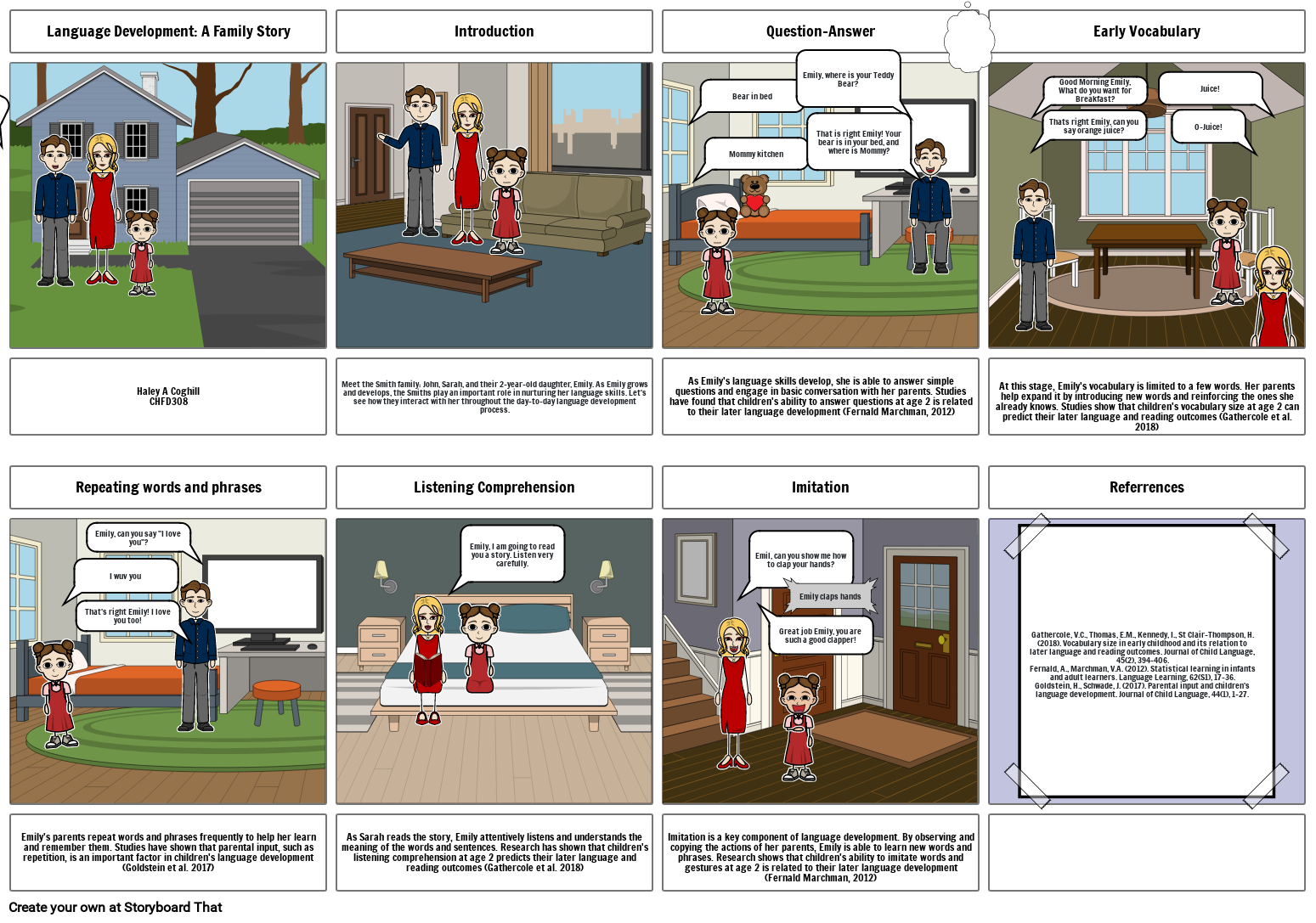CHFD208 ASSIGN 7 COGHILL, HALEY

Storyboard Text
- Language Development: A Family Story
- Introduction
- Question-Answer
- Bear in bed
- Mommy kitchen
- Emily, where is your Teddy Bear?
- That is right Emily! Your bear is in your bed, and where is Mommy?
- Early Vocabulary
- Thats right Emily, can you say orange juice?
- Good Morning Emily, What do you want for Breakfast?
- Juice!
- O-Juice!
- Haley A CoghillCHFD308
- Repeating words and phrases
- I wuv you
- Emily, can you say "I love you"?
- Meet the Smith family: John, Sarah, and their 2-year-old daughter, Emily. As Emily grows and develops, the Smiths play an important role in nurturing her language skills. Let's see how they interact with her throughout the day-to-day language development process.
- Listening Comprehension
- Emily, I am going to read you a story. Listen very carefully.
- As Emily's language skills develop, she is able to answer simple questions and engage in basic conversation with her parents. Studies have found that children's ability to answer questions at age 2 is related to their later language development (Fernald Marchman, 2012)
- Imitation
- Emil, can you show me how to clap your hands?
- Emily claps hands
- At this stage, Emily's vocabulary is limited to a few words. Her parents help expand it by introducing new words and reinforcing the ones she already knows. Studies show that children's vocabulary size at age 2 can predict their later language and reading outcomes (Gathercole et al. 2018)
- Referrences
- Gathercole, V.C., Thomas, E.M., Kennedy, I., St Clair-Thompson, H. (2018). Vocabulary size in early childhood and its relation to later language and reading outcomes. Journal of Child Language, 45(2), 394-406.Fernald, A., Marchman, V.A. (2012). Statistical learning in infants and adult learners. Language Learning, 62(S1), 17-36.Goldstein, H., Schwade, J. (2017). Parental input and children's language development. Journal of Child Language, 44(1), 1-27.
- Emily's parents repeat words and phrases frequently to help her learn and remember them. Studies have shown that parental input, such as repetition, is an important factor in children's language development (Goldstein et al. 2017)
- That's right Emily! I love you too!
- As Sarah reads the story, Emily attentively listens and understands the meaning of the words and sentences. Research has shown that children's listening comprehension at age 2 predicts their later language and reading outcomes (Gathercole et al. 2018)
- Imitation is a key component of language development. By observing and copying the actions of her parents, Emily is able to learn new words and phrases. Research shows that children's ability to imitate words and gestures at age 2 is related to their later language development (Fernald Marchman, 2012)
- Great job Emily, you are such a good clapper!
Over 30 Million Storyboards Created
No Downloads, No Credit Card, and No Login Needed to Try!


